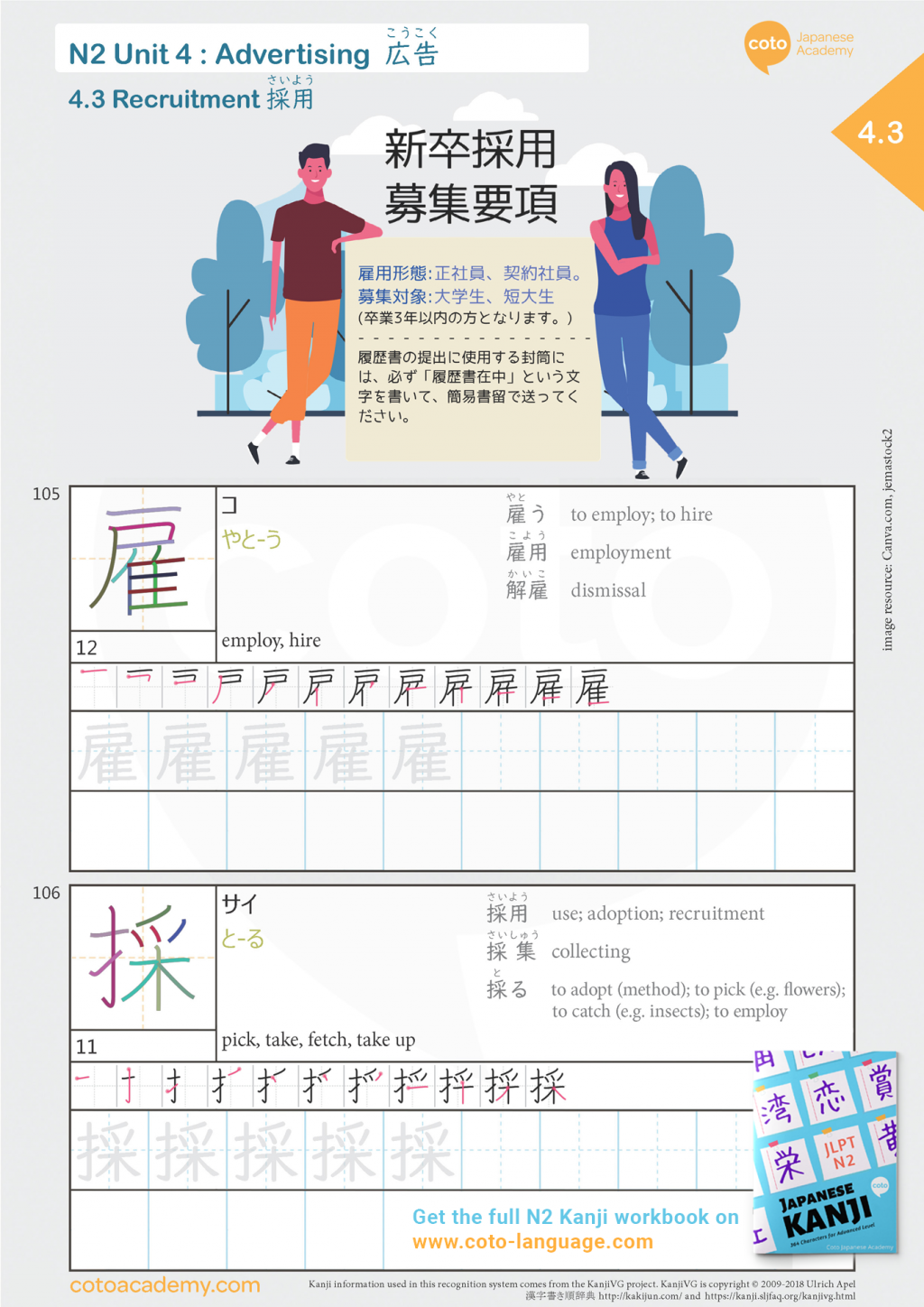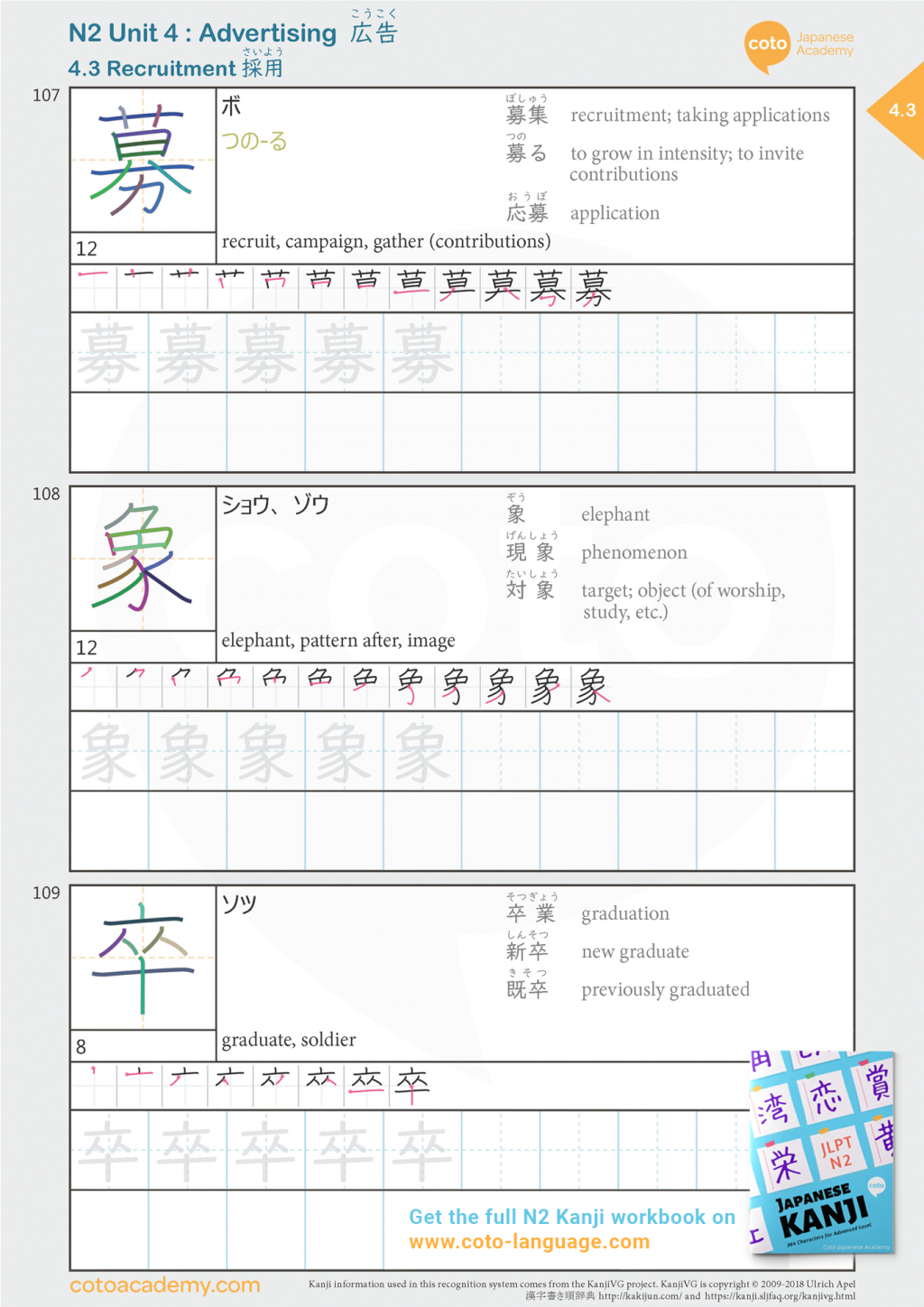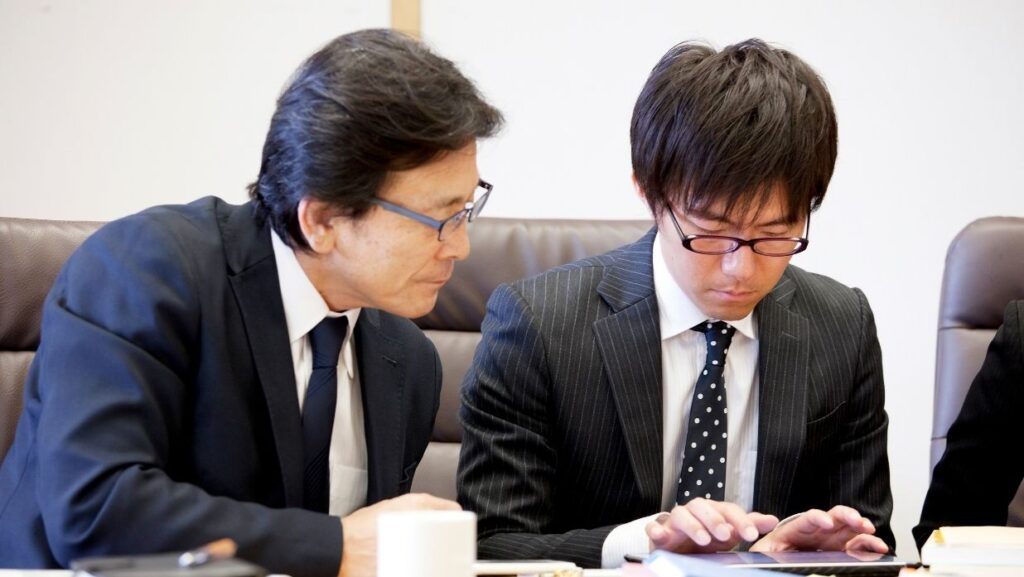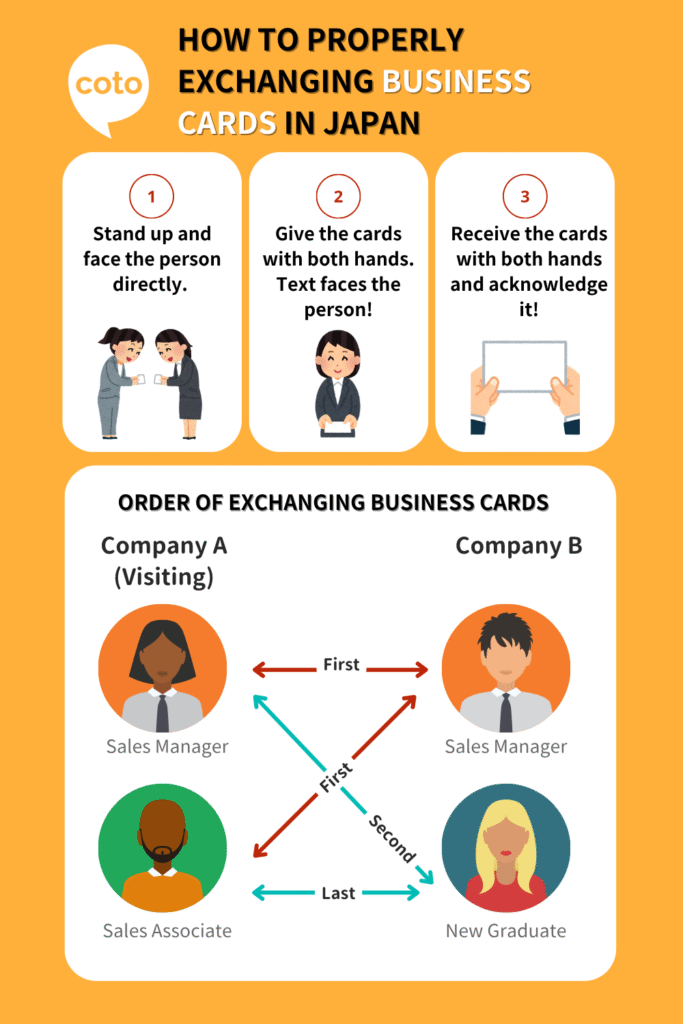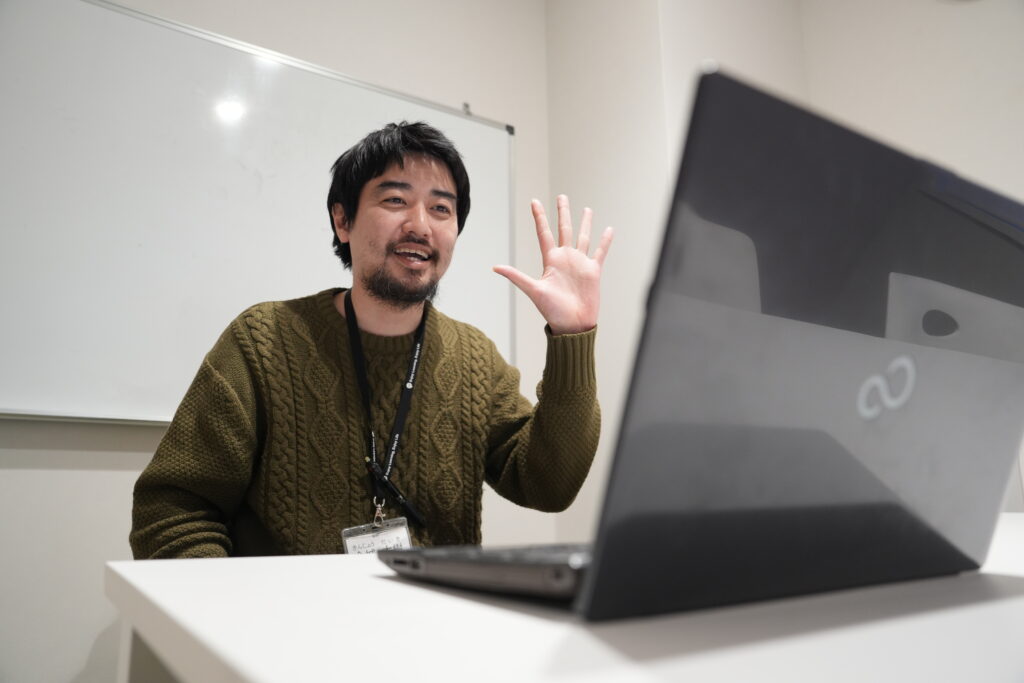English teaching in Japan is one of the most common jobs for foreigners, but other career fields and roles surprisingly don’t require a high level of Japanese. That said, you do need some level of basic-to-intermediate speaking skills to live comfortably in Japan.
While many jobs in Japan require fluency in Japanese, there are still plenty of opportunities available for non-Japanese speakers. Thanks to Japan’s increasing globalization and demand for international talent, you can now find jobs in industries like tech, hospitality, design, and more where little to no Japanese is required. In this article, we’ll explore 11 jobs you can land in Japan without needing Japanese fluency, and what you’ll need to get started.
Want to fast-track your career in Japan? Coto Academy’s 3-month Business Japanese Course is designed to help you master keigo (business Japanese) and improve workplace communication skills. Gain the confidence to speak professionally with colleagues and clients and open up new career opportunities!
Can I Really Work in Japan Without Knowing Any Japanese?
The short answer is yes, you can get a job without needing Japanese, and that job doesn’t have to be an English teacher.
You might have more limited options, and your opportunities depend largely on your skills and the current job market trend. The IT industry, for example, is one of the largest industries in the Japanese economy. The Japan Times estimated that the country would face a shortage of 600,000 IT-related professionals by 2030. A lot of companies are eager to hire foreign IT workers as a solution. If you have a background or knowledge in tech, recruiters in top companies are willing to hire you from overseas and sponsor your stay in Japan, even if you don’t necessarily have a high level of Japanese language skills.
Recommended: Top 8 IT and Tech Job Sites in Japan
It’s relatively easy to get accepted as an English teacher, ALT, and eikaiwa teacher if you come from an English-speaking country. There are plenty of opportunities in a lot of industries, even if you only speak English. In fact, a lot of foreigners, who’ve lived here for more than 10 years, can’t speak Japanese.
There’s a catch, though: you’re closing a lot of doors if you don’t bother to learn at least conversational-level Japanese. Live here long enough, and eventually, you will realize that you can miss out on getting promotions and attractive job offers.
Even a decent conversational level or the ability to speak Japanese confidently (which is the focus of Coto Academy), can widen your job opportunities. Even if that job doesn’t require Japanese, showing that you are learning will give you a good impression and open more career opportunities.
English-speaking Jobs in Japan With No Japanese Required
We’ll be covering jobs that fall under the Engineer/Humanities visa, or the 技術/人文知識/国際業務 (gijutsu/jinbun-chishiki/kokusai-gyoumu). Most professional jobs fall under this category because they include fields like human resources, accounting, tech, marketing, and sales.
What we won’t cover are the jobs under the Specified Skills Visa, or 特定技能ビザ (tokutei ginou bisa). The type of jobs you do on this type of visa are work-related tasks, like construction, automobile maintenance, food service, hospitality, and nursing care. We won’t be recommending blue-collar and part-time jobs.
1. Recruiter and Consultant Job in Japan

A career at an international consulting firm in Japan is attractive to foreigners for a few reasons. Generally, even if you are a fresh graduate, you will still receive a higher base salary.
It’s also one of the most popular options for foreigners who want to change their careers. This is because it’s possible to become a recruiter without any prior experience or relevant background. You don’t need a relevant degree like human resources, psychology, or communication, although that’s always a plus point. Instead, hiring managers and recruiting companies decide on the right candidate based on their soft skills: negotiation, strong communication, confidence, and critical thinking.
Most of all, you don’t need Japanese language ability to be a recruiter. Most of your clients will be bilingual, and most of the consulting firm’s databases are managed in English. In fact, you should be able to speak it well, because negotiations are done in English.
The life of a consultant is coveted and competitive. Rather than HR, think of recruiters as a sales job. To be a top biller, you need to be able to thrive under pressure and in a fast-paced environment. But it’s extremely rewarding, too.
The annual starting salary is typically 3.6 million JPY, but the number can go up depending on the size and contract of your company. Keep in mind that this doesn’t include your bonuses yet. If you perform well, you can easily double and triple your income.
Top consulting firms in Japan are Robert Walters, Michael Page and Hays, but you will also find mid to smaller-sized recruitment companies.
You can also be an internal recruiter for global and international companies, so always check the “Careers” page of your dream company. There might be an open position for talent acquisition specialists in Japan.
2. Creative and Marketing Roles in Japan

With Japan’s growth as both a travel destination and an economic hub, many companies are now turning their attention to previously untapped markets: global and non-Japanese audiences. Some are expanding their brand presence overseas, while others are adapting their services for foreigners living in Japan, creating demand for skilled professionals who can localize and market effectively in either (or even both!) directions.
As a result, depending on the company, you might see a demand for international talent that can focus on global outreach. Marketing and advertising agencies in Japan like Humble Bunny, which is an expert in helping companies localize for the Japanese market, actively seek bilingual or English-speaking marketers or project managers to help bridge cultural and communication gaps.
3. Real Estate Jobs in Japan
To buy a house, invest in a property, or hunt for an apartment, you have to deal with real estate agents and go through rigorous procedures — all in Japanese. In 2020, the country recorded 2.89 million foreigners living here, so there was high demand for English-speaking housing agents.
Now, a lot of real estate companies provide multilingual support, including English. Some of them exclusively specialize in handling foreign clients.
There was a high demand for English-speaking housing agents in Japan. In 2020, the country recorded 2.89 million foreigners living here, and a big chunk of them have trouble going to the typical Japanese real estate company. With travel restrictions and borders easing, we can expect a surge of newcomers and returning international residents.
Now, you can find real estate agencies that specialize in finding an apartment for foreigners, which is where you can come in. Usually, experience in real estate brokerage transactions is preferred, but a lot of companies welcome candidates with relevant experience.
Another attractive feature is the commission system, too. Top salespeople can earn up to 20 million JPY as compensation.
4. English Teaching Jobs in Japan
The first thing that comes to mind when you put “English” and “jobs in Japan” together is “English teacher”. In order to teach English in Japan, you will need to have a Bachelor’s degree, but it doesn’t have to be relevant to education. Teaching certifications, like the TEFL, are preferred but generally not required.
You can’t group all English teachers the same.
1. ALT (Assistant Language Teacher)
More than half of the English teachers in Japan are ALTs. As an ALT, you’re not in charge of teaching the whole class. Rather, you’re working with the Japanese teacher at the school you’re assigned to. Your role is to become the language instructor and “cultural ambassador”.
You don’t need any educational license, master’s degree or relevant education degree to be an ALT.
2. Eikaiwa Teacher
Eikaiwa is an English conversation school, and the students can either be children or adults. The word “Eikaiwa” stems from 英 or “Ei” (English) and 会話 or “Kaiwa” (Conversation). Giant Eikaiwa companies include NOVA, ECC, AEON, Berlitz or Peppy Kids Club.
3. Private school or university teacher
Salaries for ALT and Eikawa teachers are decent, but not the best. In terms of a career within the education industry in Japan, becoming a full-time teacher at a private school or university is your best bet to nail a higher salary and better career progression.
There are over 700 universities in Japan, and some of them have an English learning program. Schools will often require you to have at least a master’s degree in education, alongside TEFL or TESOL, and even prior teaching experience.
Other than the above, you can become an English teacher for adults or for kindergartens.
Here are some popular job sites to search for English:
5. IT and Tech Engineer Jobs in Japan

There’s no denying that Japan is facing an IT shortage, so having a background in IT can seriously make you a sought-after candidate. You can find more than 100 programming jobs on job platforms like LinkedIn and Glassdoor alone, and it’s easy to see why. Japan’s IT industry takes about 3% of the world market, and all companies, regardless if they’re traditional Japanese or international, need web designers, developers, and IT professionals.
Because of this lopsided supply-demand IT job market situation, requirements for the Japanese language are relatively low, sometimes none at all. Startup and unicorn companies like Mercari and Zehitomo hire tech engineers from overseas. Japanese technology group NEC partnered with Persol Career and has provided an app that matches companies in Japan with Indian tech engineers.
Tokyo Dev, one of the leading IT job sites in Japan, did a survey of more than 435 software engineers living in Japan. The average salary is 8.5 million yen per year, which is almost half more than what the average worker in Japan makes (6.2 million yen).
Out of all of them, only a third can speak Japanese fluently, and 80% of these employees use English as the primary language to communicate with their coworkers.
Note that even though there is a big pool of vacant engineering and tech positions, the roles are still coveted. You will need to be adept in JavaScript, HTML/CSS, and Python (all common coding languages), but some corporations may use TypeScript, C++, and SQL.
Here are some popular job sites that are specifically for IT and tech-related roles in Japan:
We’ve created a separate article dedicated to listing the best IT job sites in Japan.
6. Hospitality Jobs in Japan
In 2019 (pre-COVID), Japan recorded 8 million overseas travelers. Urban centers like Tokyo and famous holiday destinations are generally more foreign-friendly. Besides English-speaking Japanese staff, some hotels will have native customer support employees: front desk agents, chefs, PR staff, and general managers. If you can bring relevant experience and background to the table, check out the job listings on Career Cross and Daijob.
Another great way to look for job vacancies is by exploring the career section of each company’s website. Global hotel chains will also do internal transfers or approach prospective candidates themselves.
7. Customer Service Positions in Japan
Responsibilities of a customer service staff include resolving customer queries, recommending solutions, and guiding service users through features and functionalities. To be successful in this role, you should be an excellent communicator. Generally, Japan-based companies favor bilingual customer service, but if you’re a mid-career professional, there are open positions that require little Japanese: supervisors, site directors, managers.
If a company deals with a large volume of foreign customers, it may hire. You can find customer service job advertisements in Japan in recruitment agencies like Michael Page, Hays, and Robert Walters.
Check out some of the more popular bilingual recruitment agencies in Japan.
8. Graphic, Product, or Creative Designer Career in Japan
Designers are also in high-demand jobs in Japan at the moment. Whether it’sa UI/UX specialist, a graphic designer, or a product designer, your main selling point will be your hard skills and portfolio. General requirements include knowledge of Photoshop and Illustrator, but some companies may require advanced skills in HTML, CSS, and JavaScript (depending on the position). You can find more job listings on Google.
9. Study Abroad Staff in Japan
Currently, Japan is restricting the number of foreign students who can enter from their home countries (subject to change). The industry might be in a lull right now, but things are starting to pick back up.
Usually, you can go and live in Japan as a student in two ways: independent application, where you find a university and apply directly, or through an agent. Companies like Coto School Finder help foreign students apply for a school in a Japanese language school and a student visa. Besides that, they provide additional support, like helping you find an apartment or share a house.
Because they are dealing with international students, these agencies are not just looking for English-speaking staff, but native Korean, French, Chinese, Vietnamese, and Italian student coordinators, too.
Universities in Japan with an English track program — or at least those that deal with a large volume of foreign students — will also hire foreigners to manage their students.
Where to Find Jobs in Japan that Don’t Require Japanese
The best chance to get a career in Japan that doesn’t require high Japanese skills is through browsing job posting sites and hiring platforms like LinkedIn, GlassDoor, Jobs in Japan, Career Cross, and GaijinPot Jobs. Check out some of the best foreigner-friendly job hunting sites in Japan for more options.
Besides that, we recommend that you do your own research. Find out about the industry and look for companies that you might like. Visit their website. Most companies have a designated Careers page (“Work with Us”, “Careers”).
If you have more years of experience in your pocket working in a niche industry (like healthcare, automotive, or infrastructure), approach a recruiter. They deal with highly specialized positions that are often mid-career or even at C-levels, so you have a better chance of being matched with a potential job in a top company that is willing to negotiate your terms and salary.
Want to Boost Your Career in Japan? Take Japanese Lessons at Coto Academy
While there are jobs in Japan besides English teaching, your options might still be limited. The best way to boost your career prospects in Japan is by improving your Japanese skills!
Why not take Japanese lessons at Coto Academy and open more doors for your career? With locations in Shibuya, Yokohama, and online, our classes are designed to fit the busy schedules of working professionals. Discover how we can help you achieve your Japanese language goals. If you’re unsure where to start, we offer a free Japanese level check to guide you on the right path.
FAQ
Can I get a job in Japan if I don’t speak Japanese?
Yes, it’s possible to find jobs in Japan that don’t require Japanese, especially in industries like IT, design, hospitality, and international sales. However, your options may be more limited compared to fluent speakers, and most of these roles are in global companies or startups.
What kind of jobs in Japan don’t require Japanese?
Jobs in tech (like software engineering, UI/UX design), translation/localization (for your native language), content creation, digital marketing, international customer support, and even certain hospitality roles at international hotels may not require Japanese.
Do I need a visa to work in Japan without speaking Japanese?
Yes, you’ll still need a valid work visa. Most companies that hire non-Japanese speakers will sponsor your visa if you meet the job and education requirements. Common visa types include the Engineer/Specialist in Humanities/International Services visa.
How can I find jobs in Japan that don’t require Japanese?
You can check job boards like Japan Dev, GaijinPot Jobs, Jobs in Japan, and LinkedIn. Filtering for “No Japanese Required” or “English-only” will help narrow down your search.
Where can I study Business Japanese?
You can study Business Japanese with Coto Academy. Coto offers flexible Business Japanese courses designed for working professionals, covering everything from keigo (honorific language) to real-world business situations like meetings, emails, and presentations.
Want to work in Japan? You might like related content like:
- Japanese Work Culture: How is it Different from the West?
- How to Write a Japanese Resume (Rirekisho): Free PDF Template
- How to Get a Job in Japan as a Foreigner
- Common Japanese Job Interview Questions to Know
- How to Introduce Yourself in Japanese
- How to Quit Your Job in Japan
- How to Exchange Business Cards in Japan: Meishi Koukan
